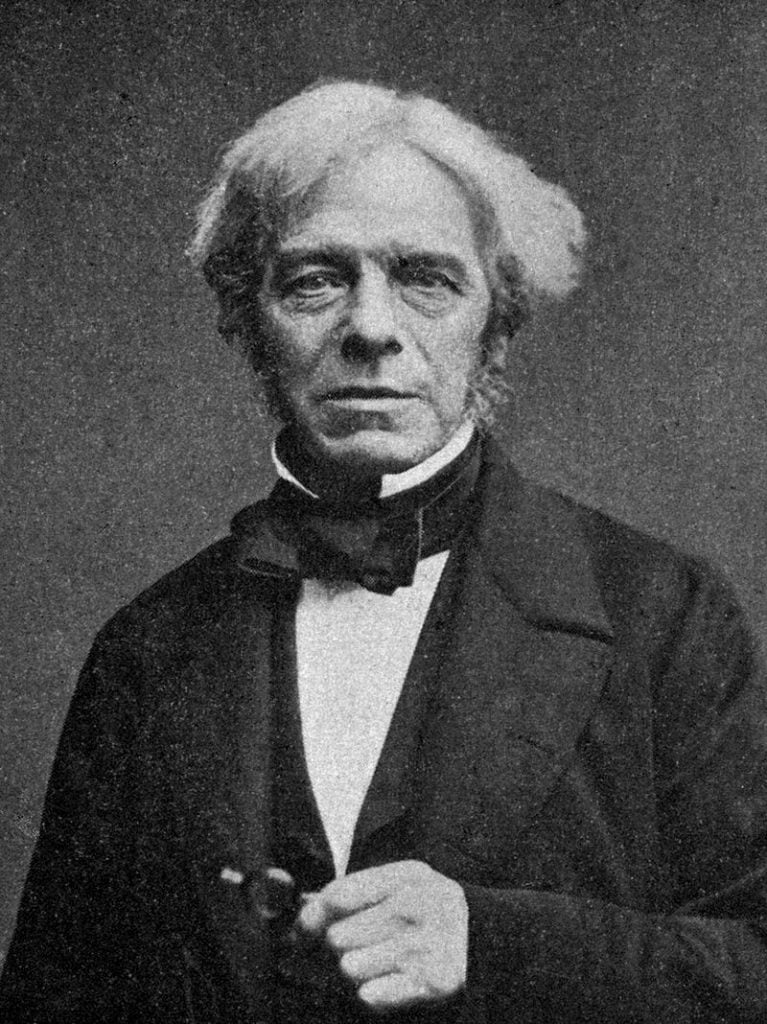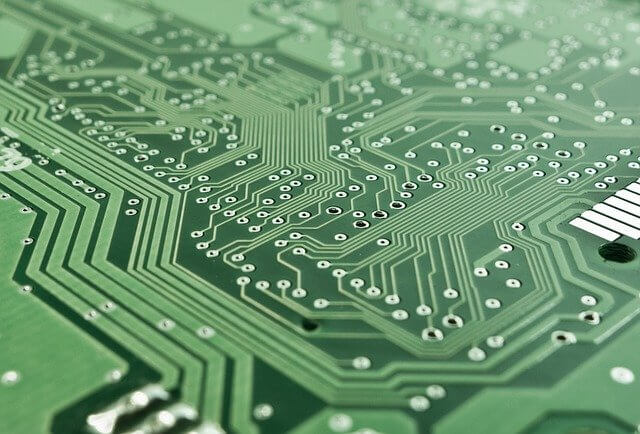
Today it is next to impossible to think of any home appliances, computers, cell phones, cameras, or TV without electronics. The journey began with the invention of the vacuum diode by J.A. Fleming; in 1897 this was followed by the evolution of the transistors and other devices in quick succession in the mid-40s.
Soon the invention of the integrated circuit boards drastically changed the electronic circuits and led to a significant reduction in cost, size, and weight of electronic devices.
The 60s saw the evolution of microprocessors, integrated circuits and other devices.
But this narrative of the evolution and growth of electronics technology will never be complete without recalling the silent efforts put in by the heroes who contributed to change the shape of things to come in the present, past and future.
Charles Coulomb (1737-1806)
Charles coulomb was a great scientist of the 18th century. He experimented with mechanical resistance and developed the coulomb’s law of electro-static charges in the year 1799.
Allesandro Volta (1745-1827)
Allesandro Volta was an Italian scientist. He invented the battery (Voltaic cell) that could produce electricity after a chemical reaction in 1799.
Hans Christian Oersted (1777-1852)
Hans Christian Oersted showed that whenever a current flows through a conductor, a magnetic field is associated with it. He initiated the study of electromagnetism and discovered Aluminum in the year 1820.
George Simon Ohm (1789-1854)
George Simon Ohm, a German physicist, experimented with the electric circuits and made his own part including the wire. His findings are some conductors worked when compared to others. Father of Ohms law in the year 1827, which is a relationship between current, voltage& resistance. The unit for resistance is named after him.

Michael Faraday (1791-1867)
Michael Faraday was a British scientist and great pioneer experimenter in electricity and magnetism. After the discovery by Oersted, he demonstrated electromagnetic induction in the year 1831. This is the basic principle of the working of generators, having wide use in industries, especially, during power failure. It has been used by people also who afford it.
Samuel Finley Breese Morse (1791-1872)
Samuel Finley Breese Morse brought a telegraphy system to the forefront with electromagnets & invented the code in 1844 and named it after him.
In the year1837, the expansion of an electric telegraph system uses a deflecting magnetic needle, developed by Sir Charles Wheatstone & Sir W. F. Cooke, who fixed the primary railway telegraph in England. To make the telegraph a viable system for communication, Morse overcame the design flaws of both electrical as well as information flow limits to allow the telegraph to turn into a feasible system for communication.
Also Read:
Electronics are the no.1 cause of sleep disturbance in teens
A Beginner’s Guide to Digital Signal Processing (DSP)
Joseph Henry (1799-1878)
Joseph Henry was an American scientist, and independently discovered electromagnetic induction in the year 1831 – a year before faraday’s discovery. The unit of induction was named after him.
Heinrich F.E. Lenz (1804-1865)
Heinrich F.E. Lenz was born in Tartu, the old University City, Estonia. He worked as a professor at St. Petersburg University. He followed several experiments on the lead of Faraday.
He is honoured by the law with his name and it states that the induced current’s electrodynamics action equally resists the mechanical inducing action. Afterwards, it was identified as an expression for energy conservation.
Hermann Lud-wig Ferdinand von Helmholtz (1821-1894)
Hermann Lud-wig Ferdinand von Helmholtz was a universal scientist as well as a researcher. In the 19th century, he is one of the famous scientists. In the year 1870, once examining all the common electrodynamics theories, he lends his support for Maxwell’s theory which was slightly recognized on the European continent.
Joseph Wilson Swan (1828-1914)
In the year 1879, Joseph Wilson Swan was invented as an electric lamp in Britain. The filament of the lamp is carbon & had a fractional vacuum & demonstration of preceded Edison’s in six months.

Luigi Galvani (1737-1798)
Luigi Galvani, a professor at the University of Bologna, after a long research on frogs he found the presence of electricity in frogs in the year 1791.
James Clerk Maxwell (1831-1879)
James Clerk Maxwell was a British physicist, and he wrote a treatise on magnetism and electricity in the year 1873. He developed the electromagnetic field equations in the year 1864. The equations in it were explained and predicted by hertz’s work and faradays’ work. James Clerk Maxwell formulated an important theory – that is, the electromagnetic theory of light.
Sir William Crookes (1832-1919)
Sir William Crookes was developed electrical discharges using “Crookes tubes” which are highly evacuated in 1878. These studies laid the establishment for J. J. Thomson’s investigation in 1890 about the discharge-tube phenomenon as well as the electron. Sir William also invented the Thallium element to complete the radiometer.
Oliver Heaviside (1850-1925)
Oliver Heaviside worked with the equations of Maxwell to decrease the exhaustion incurred in resolving them. In the procedure, he created a vector analysis form known as “Operational Calculus” that changed the differential (d/dt) through the algebraic variable (p) to change differential equations for algebraic equations. So this will increase the solution speed greatly.
Oliver also invented the ionized air layer and named it after him, that inductance can be included in transmission lines for increasing the distance of transmission & that charges will enlarge in mass once accelerated.
Heinrich Rudolph Hertz (1857-1894)
Heinrich Rudolph Hertz was the first scientist to demonstrate the radio waves’ existence. His motivation came from Helmholtz & Maxwell.
In the year 1887, he demonstrated the velocity of radio waves and also known as Hertzian waves which were equivalent to that of light. The frequency unit like Hertz is named after him.
Henrich Rudolph Hertz (1857-1894)
Henrich Rudolph Hertz was a German physicist born in 1857 in Hamburg. He demonstrated the electromagnetic radiation predicted by Maxwell. By using experimental procedures, he proved the theory by engineering instruments to transmit and receive radio pulses. He was the first person to demonstrate the photoelectric effect. The unit of frequency was named Hertz in his honorarium.

Charles Proteus Steinmetz (1865-1923)
Charles Proteus Steinmetz has discovered the mathematics for hysteresis loss, therefore allowing engineers to decrease magnetic loss within transformers. Charles also applied the mathematics for compound numbers to AC analysis & therefore situated electrical systems engineering design on a scientific base in its place of a black art.
Along with Nikola Tesla, he is accountable for the power generation which is away from Edison’s inefficient DC system toward the more stylish AC system.
Ben Franklin (1746-52)
Ben Franklin invented different electrostatic generators by rotary glass balls for the experiment. By using this experiment, he invented the electricity theory for the single fluid.
In earlier theories, two electrical fluids, as well as two magnetic fluids, were used. So he imagined simply one imponderable electrical in the universe. The disparity in electrical charges was clarified through an excess (+) otherwise defect (–) of the only electrical liquid. The positive & negative symbols appear in Electric Circuit.
Andre Marie Ampere (1775-1836)
Andre Marie Ampere was a French mathematician and physicist. He studied the effects of electric current and invented solenoid. The SI unit of electric current (the Ampere) was named after him.
Karl Friedrich Gauss (1777-1855)
Karl Friedrich Gauss was a physical scientist and the greatest German mathematician. He contributed to many fields like algebra, analysis, statistics, electrostatics, and astronomy. The CGS unit of magnetic field density was named after him.
Wilhelm Eduard Weber (1804-1891)
Wilhelm Eduard Weber was a German physicist. He investigated terrestrial magnetism with his friend Carl fried rich. He devised an electromagnetic telegraph in the year 1833, and also established a system of absolute electrical units, and the MKS unit of flux was named after Weber.
Thomas Alva Edison (1847-1932)
Thomas Alva Edison was a businessman and an American inventor. He developed many devices like, practical electric bulbs, motion picture cameras, photographs,s, and other such things. While inventing the electric lamp, he observed the Edison effect.
Nikola Tesla (1856-1943)
Nikola Tesla invented the Tesla coil; the Tesla induction motor; alternating current (AC); an electrical supply system that includes a transformer; 3-phase electricity and a motor. In 1891, the Tesla coil was invented and used in electronic equipment, television, and radio sets. The unit of magnetic field density was named after him.
Gustav Robert Kirchhoff (1824-1887)
Gustav Robert Kirchhoff was a German physicist. He developed Kirchhoff’s law that allows calculation of the voltages, currents, and resistances of electrical networks.
James Prescott Joule (1818-1889)
James Prescott Joule was a brewer and an English physicist. He discovered the law of conservation of energy. The unit of energy – Joule was named in his honour. To develop the scale of temperature, he worked with Lord Kelvin.
Sir John Ambrose Fleming (1849-1945)
The earliest diode tube was invented by Sir John Ambrose Fleming in 1905. This device includes three leads where two leads are the heater and cathode & the remaining one is the plate.
Lee De Forest (1873-1961)
Lee de forest was an American inventor, and he invented the first triode vacuum tube: the Audion tube in 1906. He was honoured as the father of radio.

Albert Einstein (1879-1955)
In the year 1905, Einstein was involved in Max Planck’s experimental results to notice electromagnetic energy appeared to be produced from radiating objects within quantities that were separate.
The power of these emitted quantities is known as light-quanta and it was directly proportional to the radiation frequency. Here this frequency was different from standard electromagnetic theory depending on Maxwell’s equations as well as thermodynamics laws.
Einstein employed the quantum hypothesis of Planck to explain observable electromagnetic radiation, otherwise light. Based on the viewpoint of Einstein, the beam could be visualized to include discrete packages of radiation.
Einstein used this analysis to clarify the effect of photoelectric, where certain metals produce electrons once they are illuminated through the light in a specified frequency. Einstein’s theory has formed the source for Quantum Mechanics.
Walter Schottky (1886-1997)
Walter Schottky was a German physicist. He defined shot noise-random electron noise in thermionic tubes and invented the multiple grid vacuum tube.
Edwin Howard Armstrong (1890-1954)
Edwin Howard Armstrong was an inventor and an American electrical engineer. He invented electronic oscillators and regenerative feedback. In 1917, he invented the superheterodyne radio and patented the FM radio in the year 1933.
Jack St. Clair Kilby (1923-2005)
Jack St. Clair Kilby was invented the IC (integrated circuit) at Texas instruments while researching miniaturization, a phase-shift oscillator with independently connected parts. He received a copyright in the year 1959.
Robert Norton Noyce (1927-1990)
Robert Norton Noyce was implemented the IC using a practical approach for scaling the circuit size. He became an organizer for a company like Fairchild Semiconductor in the year1957.
In the year 1959, Noyce and his colleague invented a semiconducting chip design; a similar thought came to mind separately to “Jack Kilby” in Texas Instruments in the same year. So, both Noyce, as well as Kilby, were granted patents.
In the year 1968, Norton & Gordon Moore formed Intel. In the year 1971, Intel designer Ted Hoff has invented the primary microprocessor namely the 4004.
Seymour Cray (1925-1996)
In the year 1976, the father of supercomputers namely Seymour Cray & George Amdahl was defined as the industry of supercomputers.
Ray Prasad (1946-present)
The Author of the Surface Mount Technology Principles & Practice Textbook received many awards like IPC President, Intel Achievement, SMTA Member of Distinction, & Fellowship Medal of Dieter W. Bergman IPC.
Since the lead engineer, he initiated SMT into airplanes as well as security systems at Boeing. He handled the SMT global implementation like a program manager at Intel Organization.

